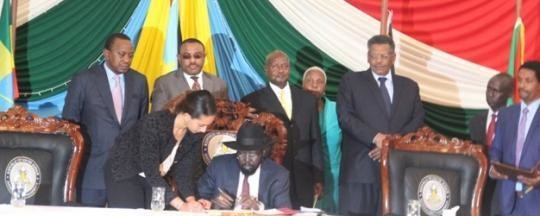Explaining the S Sudan peace agreement (4): Who will join the new government?

'Focus on the Agreement' is a new daily segment broadcast on Radio Tamazuj to explain the contents of the peace agreement signed in August 2015 between South Sudan's warring parties. Many South Sudanese have never read the agreement or heard any detailed explanation of what it says. 'Focus on the Agreement' summarizes key parts of the deal in daily broadcasts, not translating every detail but highlighting the basics.
On Friday we looked at the mandate of the new transitional government. Today we look at Chapter 1, Articles 3 and 4, about the composition and structure of the new government.
Who will join the new government?
According to the peace deal, the members of the current government, who belong to the SPLM faction loyal to Salva Kiir, will compose part of the new transitional government. Another element of the government will be the rebel group loyal to Riek Machar. They will also participate in the new government.
The group of SPLM politcians known as the 'Group of Ten' or 'Former Detainees' will also participate in the government according to the agreed power-sharing ratio. The final group participating in the new government will be members of the non-armed opposition political parties.
Political parties are given the right to choose their own representatives in the new government without interference from the government, according to the peace deal. IGAD mediators will witness this process.
The eligible political parties are defined by the agreement as those parties who participated in a June 2014 workshop facilitated by IGAD mediators in June 2014. This means that the opposition politician Lam Akol will be eligible to join the new government, according to the peace deal, because he participated in the June forum.
The next section of the agreement, Article 4 of Chapter 1, explains that the executive branch of the new government will consist of the president, a first vice president, a vice president, the council of ministers and deputy minister. Later sections of the agreement explain in detail how the different factions will share power and which positions they will take.
On Monday we will continue this series by looking at Chapter 1, Articles 6 and 7, which explain more about the structures and leadership of the new government. Later in the series we will hear about the hybrid court for war crimes, the truth commission, the management of oil resources, and other key issues.